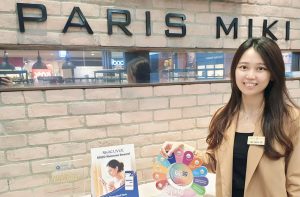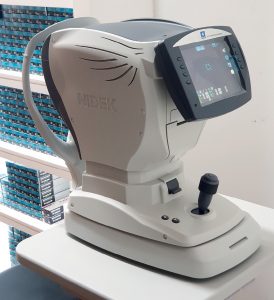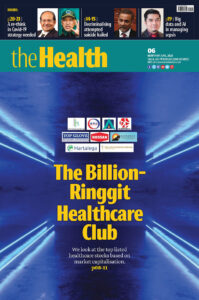There are certain factors to consider when purchasing your beauty or colour contact lenses
The technology that goes into making colour lenses in an important factor to consider when you buy contact lenses.
Optometrist Lee Min Er from Paris Miki shared that the lens technology for colour lenses involves the way the pigments are embedded on the lens.

“There are two different ways to embed the pigment. First, the pigment is printed onto the surface of the lens.
“It can be either be on the outer or inner surface of the lens. It means that the pigment will be directly in contact with either the eyelid or the eyeball.”
The other method is where colour pigments are embedded in the lens matrix, where it does not come in contact with the eye surface to ensure safety.
Min Er shared a gross test to determine which technology is used.
“Use a cotton bud to rub on both surfaces of the contact lenses. If you notice color on the cotton bud, then it uses the surface printing technology.”
Is it safe?
She advised against using contact lenses with pigment printed on either surface.
“The pigment will be in direct contact with the eyelid and eyeball. So, when we blink with our eye, with the friction, the pigment may rub off and it may stick to your eye and cause irritations and other complications.
“I would strongly suggest going for lenses with the ‘embedded’ form technology, in which the pigment is safely enclosed between two layers of the lens and prevents direct contact with the eyelid and eyeball.
“The colour does not wear off and come in contact with the eye’s delicate surface. Most importantly, it maintains eye health and is safe to use.
“ACUVUE® Define® beauty lens is an example of a safe colour lens because it uses the Beauty Wrapped in Comfort Technology, whereby the pigments are safely enclosed between two layers of the lens material and does not have direct contact with the eyes.”
“When looking for beauty lenses, it is important we do not compromise our eye health and safety.”
Min Er noted that not everyone is suitable for all types of color lenses or beauty lenses.
“It could be due to the restriction of power. For example, for those with high astigmatism, their choices will be limited to only clear lenses.
“I make sure clear vision is always the priority for our patients and customers.
“So, if you are wearing a pair of the right and suitable lenses, regardless of clear lens or beauty lens, you have the best of both beauty and safety.
Apart from vision correction, contact lenses are used for beauty and fashion. And there are two categories of these cosmetic lenses, which are beauty lenses and colour lenses.
Beauty lenses are for enhancement purposes. They are designed with the translucent clear layer to make the eye more prominent and will not hide the natural eye colour and beauty.
All non-clear lenses are known as colour lenses. There is a wide range of colour lenses, which include blue, green, violet, pink and even the Halloween series. These lenses make our eye more outstanding, bigger and give them more emphasise.
How long can you wear contact lenses?
According to Min Er, the duration of wearing beauty or colour lenses depends on the lens material, the patient’s eye condition and the replacement schedule.
“There are two main types of the lens material, hydrogel lenses and silicone hydrogel lenses.
However, she noted that it still depended on the patient’s eye condition.
“That’s why we need to do the assessment and we will advise accordingly.”
As for the contact lenses replacement schedule, she said: “There are two main types in the market, the daily or monthly lenses.
“I would suggest going for the daily lenses for hygiene and ease of use purpose compared to monthly lenses.
“You need a high level of discipline if you choose to go for monthly lenses as they need proper care, cleaning and storing. And quite surprisingly, many seem to care for the lenses using the wrong method and solution.
“Also, monthly lenses tend to have lipid deposits or protein deposits on the surface of the lens. So that’s why most people claim that they are not able to wear the monthly lenses for up to a month. It means by the third or fourth week, the comfort is no longer there.
“The more the deposits, the more it will reduce the oxygen supply to the cornea, which leads to eye damage.”
Implications of wearing unsafe contact lenses
“The most common implication of wearing an unsafe contact lens is conjunctivitis, also known as pink eye. It means there is inflammation on the transparent membrane of the eye.
“Patients may experience increased mucus, itchiness and eye swelling. In some cases, conjunctivitis can also be contagious.”
Another common effect is eye infection.
“When people with dry eyes wear contact lenses or wear ill-fitted contact lenses, it will cause corneal abrasion, which are superficial scratches on the cornea, which will lead to eye infection.”
Eye infection, explained Min Er, will cause cornea ulcer. Patients will experience excessive tearing, sensitivity to light, blurry vision, or a burning sensation on the eye.
“Cornea ulcer can lead to blindness and patients may need to undergo a cornea transplant.”
She said cornea vascularisation was another result of wearing unsafe contact lenses.
“It means that the blood vessel in the eye swells and grows into the cornea due to a lack of oxygen. If this is not treated, it will cause tissue scarring and persistent inflammation, which will significantly affect the vision prognosis and the quality of life.
“This is why it is important to approach a registered optometrist to perform a proper eye test and determine your suitability to wear contact lenses.
“If you are suitable, we will do a trial fitting session with contact lenses of trusted brands and help you decide on the most suitable lenses.”
Paris Miki well established
Paris Miki is recognised as an ACUVUE eye health centre. Its services include a comprehensive eye examination, refraction, contact lens fitting, eye health evaluation and cleaning and maintenance service.

“We are equipped with the basic instruments for eye examination and screening. We have an autorefractor, a phoropter, trial frame and trial lens, retinoscope and slit lamp.
“We also have the non-contact air-puff tonometer, which is used to check the IOP and can detect early glaucoma.”
First established in Japan in the 1930s, Paris Miki has been operating for about 91 years or almost a century.
“The company is named after its first overseas outlet location, Paris, and its founder, Miki.”
“Optique Paris Miki Malaysia was established in Malaysia in 1989 and we now have seven outlets here.
“Paris Miki upholds its corporate ideology of ‘PRIME’, the most trustful relationship with our customers. Their future is always our priority mission.
“I believe this is why Paris Miki can survive for such a long period of time and compete with others. And due to this principle, it also able to actually extend its network all over the world.”
Paris Miki specialises in a wide range of exclusive high-quality products from Japan, including frames and the latest technology contact lenses.
“We keep up with the constant change in eyewear technology as well as eye health related issues, by attending seminars and courses before the pandemic, with zoom webinars now, to provide better customer service. — The Health







